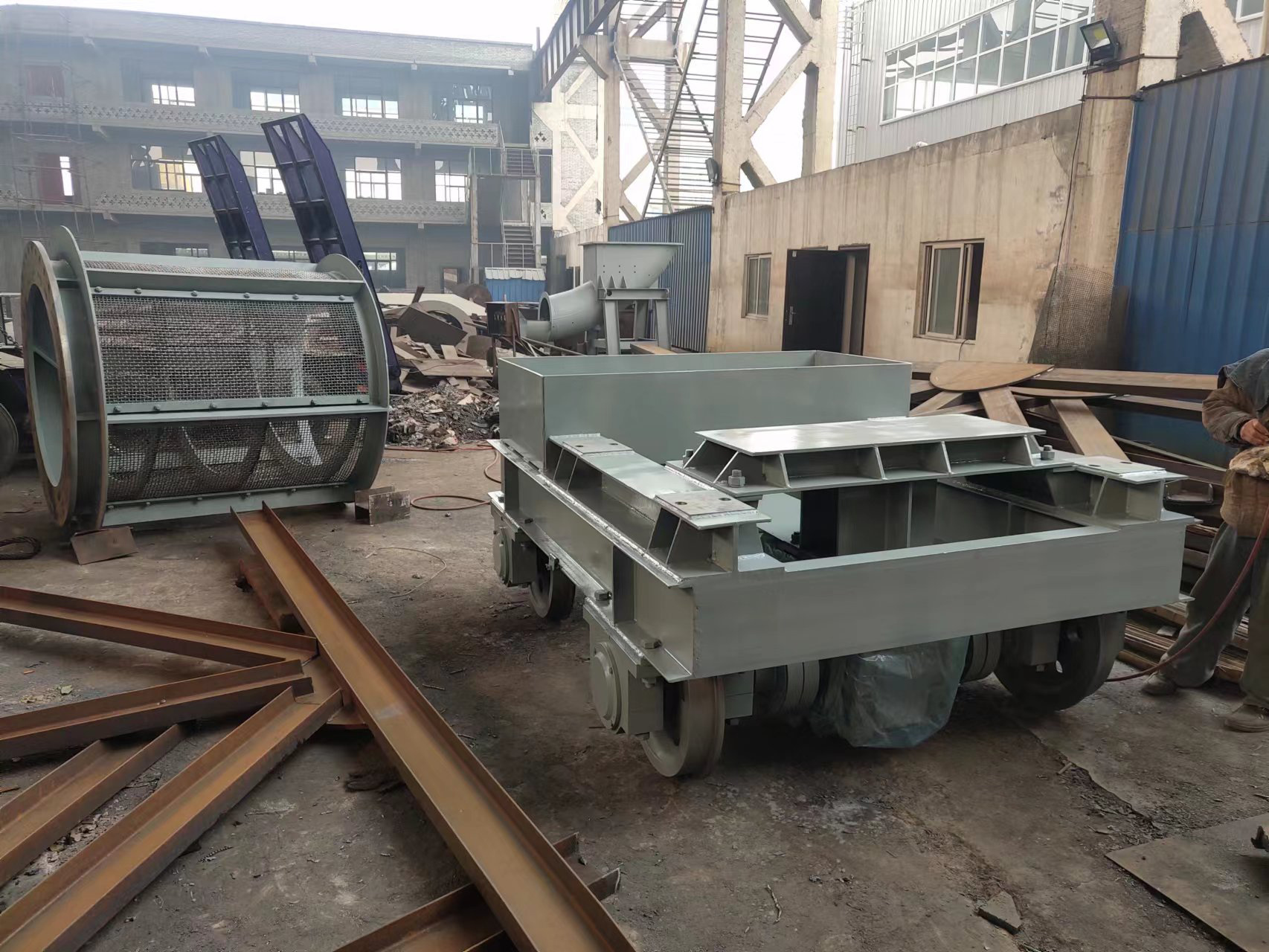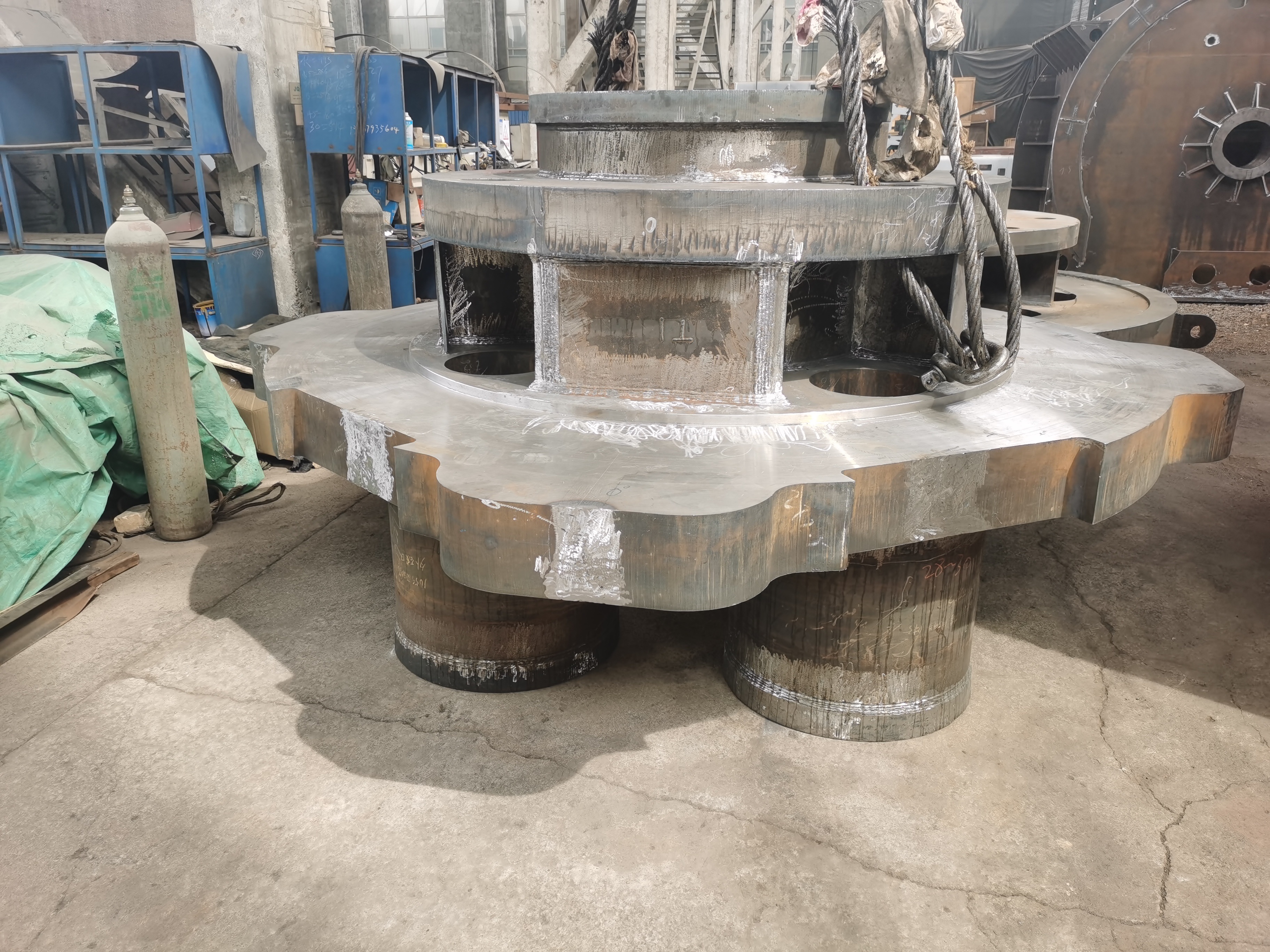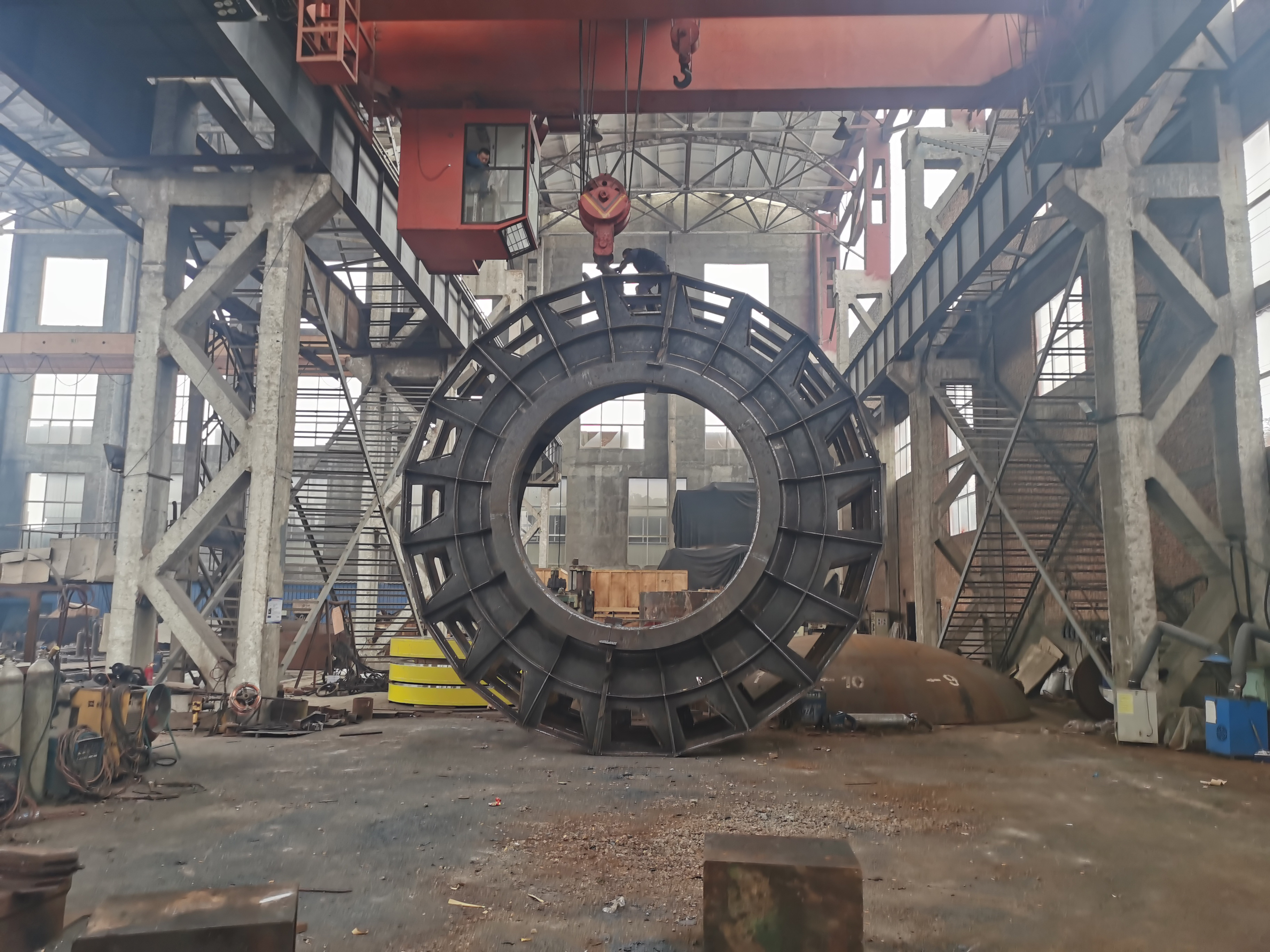Rotary kiln
The rotary kiln is an important industrial equipment
Classification:
Key words: casting and forging
Sales Hotline:
The rotary kiln is an important industrial equipment, mainly used for the thermal treatment and chemical reaction of materials. It is a cylindrical device that can be placed horizontally or slightly inclined. Depending on the different materials being processed, rotary kilns can be divided into various types, such as cement kilns, metallurgical chemical kilns, and lime kilns.
Features
Structural features: The kiln body of the rotary kiln is usually made of high-quality quiet carbon steel or alloy steel plates, rolled and automatically welded. The tire, support roller, and open gear are made of alloy cast steel, while the sliding bearings use large clearance non-scraping bearing. The drive device uses a hard-toothed reducer, elastic diaphragm coupling, and DC motor drive.
Operational features: The rotary kiln achieves uniform heating and chemical reactions by allowing materials to fully contact high-temperature gas flows through the continuous movement of its rotating body. This design makes the rotary kiln easy to operate, highly adaptable, and capable of high output.
Environmental features: The environmentally friendly rotary kiln is widely used in many production industries such as building materials, metallurgy, chemical engineering, and environmental protection, for the mechanical, physical, or chemical treatment of solid materials.
Application fields
The rotary kiln has a wide range of applications in multiple industries:
Building materials industry: Used for the calcination of cement clinker, it is an important equipment in cement production.
Metallurgical industry: Used for the smelting and reduction of metal ores, improving the purity and quality of metals.
Chemical industry: Used for the thermal treatment and chemical reactions of various chemical raw materials, producing fertilizers, catalysts, etc.
Environmental protection industry: Used for the incineration treatment of hazardous waste, achieving resource utilization.
| Soil type of stratum | Soft rock and clay |
| Minimum turning curve radius | 250m |
| Maximum slope | 3.50% |
| Total length | 9m (approximately) |
| Total weight | 370 tons (approximately) |
| Excavation diameter | 6,400mm |
| Outer diameter of front shield | 6,390mm |
| Outer diameter of the shield | 6,380mm |
| Outer diameter of tail shield | 6,370mm |
| Shield tail gap | 45mm |
| Total equipment power | 1650kW (approximately) |
| Maximum excavation speed | 80mm/min |
| Maximum thrust | 42575kN |
| Shield tail seal | 3 rows of sealing brushes |
| Soil pressure sensor | Three, on the earth pressure wall |
| Hydraulic sensor | 4, 1 for each propulsion cylinder group |
| Main bearing life | 10000 hours, according to DIN ISO 281, L10 |
| Maximum work pressure | 3bar |
| Maximum design pressure | 4.5bar |
| Including the total length of supporting facilities | 72m |
Related Products
Consultation
If you are interested in our products, please leave your email, we will contact you as soon as possible, thank you!












